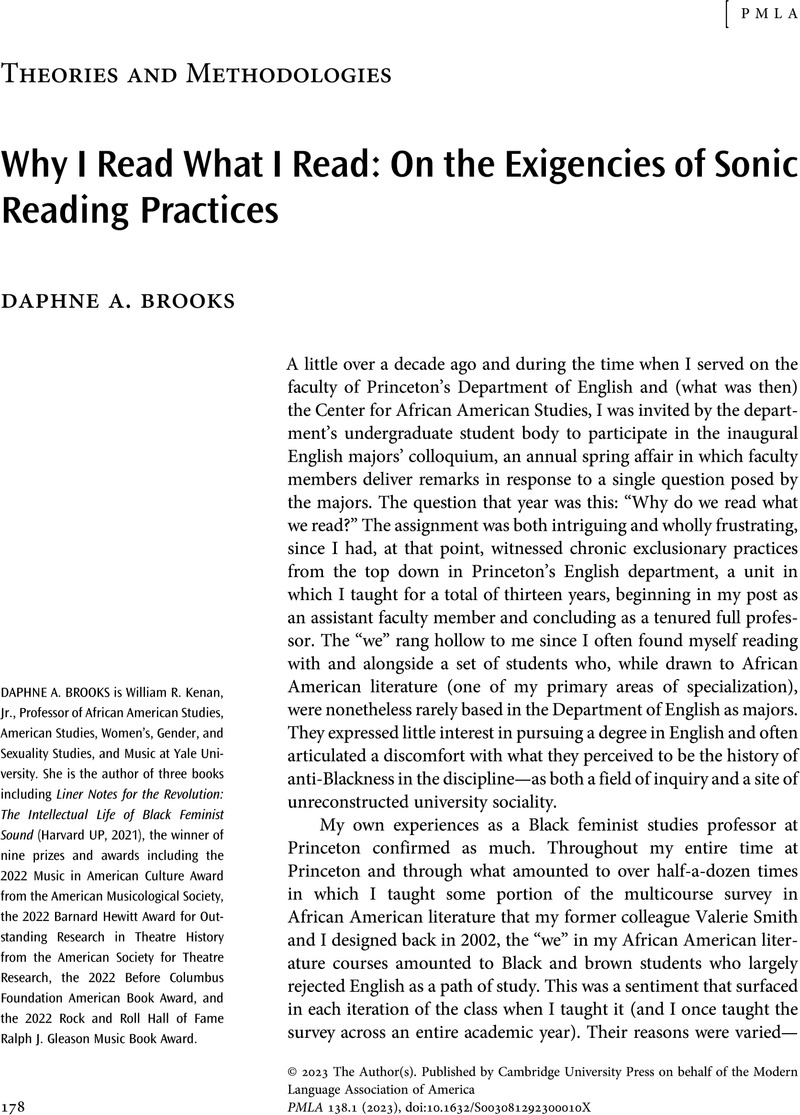No CrossRef data available.
Article contents
Why I Read What I Read: On the Exigencies of Sonic Reading Practices
Published online by Cambridge University Press: 07 March 2023
Abstract
An abstract is not available for this content so a preview has been provided. Please use the Get access link above for information on how to access this content.

- Type
- Theories and Methodologies
- Information
- Copyright
- Copyright © 2023 The Author(s). Published by Cambridge University Press on behalf of the Modern Language Association of America
References
Work Cited
Moten, Fred. In the Break: The Aesthetics of the Black Radical Tradition. U of Minnesota P, 2003.Google Scholar


